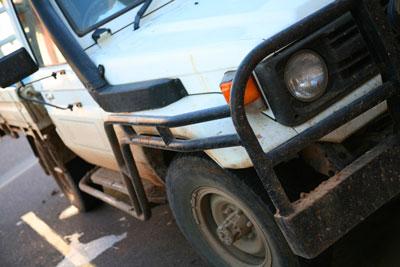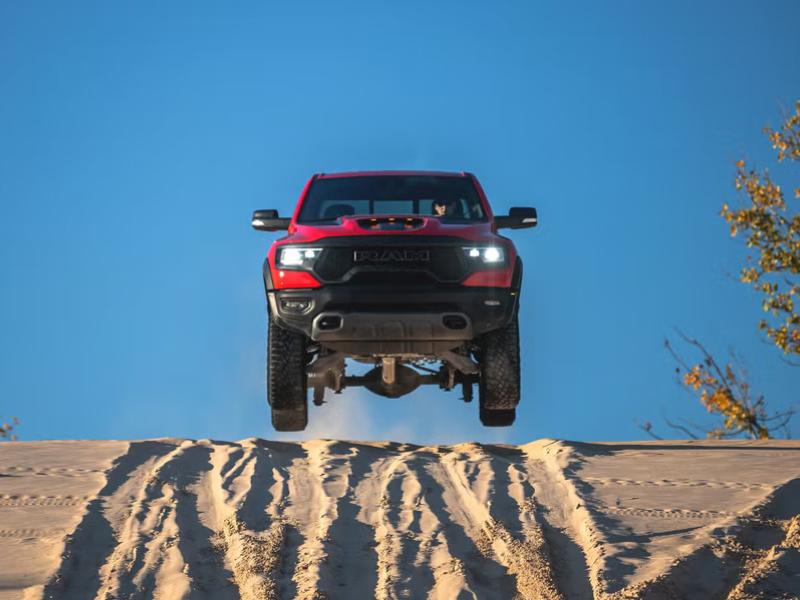A rear bull bar with corner uprights is more than just a convenient place to keep your muddy old gumboots. It can mean the difference between a straight vehicle and a smashed up rear end.
The judicious or liberal integration of solid metal ‘accessories’ means the off-road adventure is less likely to be abandoned when things go pear shaped. I use inverted commas in the previous sentence because I personally believe vehicle protection products are essentials and not accessories – many accessories can often be considered optional depending on what you do with your 4WD. Some level of external protection is required in all serious off-road situations and it’s one thing you want to get right in order to ensure all the vital bits function as nature intended. You don’t want to smash a diff, a transfer case, a drive shaft or steering components, and you also don’t want to hit something hard and break the radiator or any other important stuff in the engine bay. Plus it’s nice to keep panels, lights and paint in good order – no one likes an expensive repair bill and I personally detest insurance excesses.
I was driving on a rocky trail in a brand new Defender 90 when I first appreciated the importance of external protection products. This was something of a rock crawling expedition in the UK’s wonderful Peak District National Park near Sheffield. For a Kiwi, a landscape needs to be pretty nice to make an impact, and I’d love to go back for another spot of four-wheeling on the tough byway known as Stanage Edge. This official ‘road’ winds its way up and across the face of a sheer gritstone escarpment that’s popular with climbers, and it can be a real challenge in a vehicle.
As we began climbing the track I could see that sills and corners were in for rough treatment if we didn’t get lines or crawling speeds quite right. The rocks were big and obviously unforgiving – this rock used to be quarried to make grindstones, so it wasn’t exactly soft stuff – and the long wheelbase Wrangler I was following was already having trouble. With no sill protection, the Jeep soon had a few dents and dings, its lower ground clearance making the going a bit tricky for the driver. The Defender had been fitted with steel rock sliders and front and rear steel bumpers, which came in handy near the top. As I was being spotted through a particularly tight section we got it slightly wrong and I slid sideways off a rock, edging down onto the driver’s side sill and front right corner. The sound this made wasn’t a happy one, and the scrapes and scratches through the black paint of the steel rock sliders and bull bar were testament to what could have happened to the vehicle in standard guise. And this was low speed. The fact that this wasn’t my own Defender meant I was particularly grateful for the added armour surrounding the vehicle
A few months later in Wales I watched as a colleague descended a steep, loose slope in a shiny new M-Class Mercedes during a test. He’d neglected to raise the ride height and was running down a little too quickly. The vehicle’s low approach angle dislodged a large rock on the way down, which disappeared under the expensive vehicle to scrape and tear at its soft underbelly. Needless to say, we had an unhappy Mercedes on our hands. A skid plate would have saved the day and saved my colleague some embarrassment.
In short, you can push the limits with far more confidence when there are a few bits of steel between the vehicle and trees, rocks or dirt banks.







